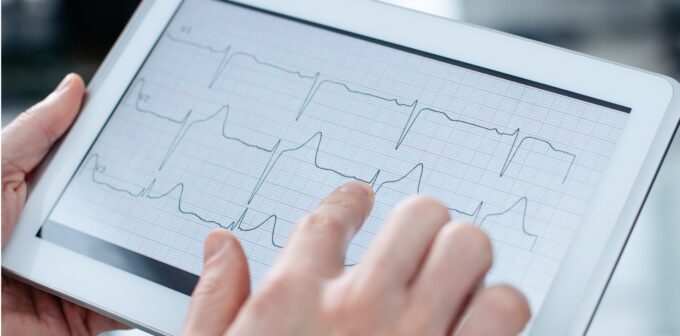
Implementing self-screening stations in GP waiting rooms significantly increases both atrial fibrillation screening and diagnosis rates, according to new Australian research.
Self-screening stations were introduced to six general practices across NSW, according to the study, published in the MJA.
After a year, researchers found self-screening stations produced screening rates for atrial fibrillation among eligible patients that were almost four times as high as those recorded in a previous survey of standard general practice screening.
“This type of development could potentially change practice for GPs, as it means they can see the patients’ results in a timely way and coordinate any follow up tests needed,” a National Heart Foundation of Australia spokesperson told Wild Health.
The self-screening process utilised custom software to identify eligible patients and notify them of the opportunity for self-screening prior to their appointment via text.
When patients arrived at the practice, reception staff provided them with a QR code and directed them to the self-screening stations. Patients scanned this code to register their personal details, then followed iPad prompts to record a 30-second ECG.
The software then exported the ECG rhythm to the patient’s investigations inbox, so their GP could view the evaluated recording and discuss the results with the patient during their consultation.
In the study, 1100 patients completed the self-screening and 49 were diagnosed with atrial fibrillation. Of these, 90% were later determined to be at a high risk of stroke.
The results showed that atrial fibrillation screening rose to around 40% of eligible patients with the implementation of self-screening, compared to the standard screening rate of 11% across Australian general practices.
Diagnosis rates doubled among the six practices, from 11 newly diagnosed cases of atrial fibrillation per 1000 eligible patients to 22 cases per 1000 patients during the self-screening period.
The study authors said the findings demonstrated how integrating self-screening for atrial fibrillation into general practice could help GPs screen for the condition more widely and reduce stroke incidence.
“Atrial fibrillation (AF) screening is recommended for people aged 65 years or more to avert preventable stroke, but general practitioners screen only about 11% of eligible patients, often because of time constraints,” they wrote.
“AF self-screening in general practice waiting rooms is a feasible approach to increasing AF screening and diagnosis rates by reducing time barriers to screening by GPs.”
The National Heart Foundation spokesperson said this technology represented an “exciting” advancement for point-of-care screening of atrial fibrillation as recommended by current guidelines.
However, the organisation stressed that patients should consult with their GP or a health professional if they had questions or doubts about any digital health-monitoring product, especially before attempting to use mobile ECG devices at home.
“While advances in technology have the potential to provide people with information beneficial about their own health, health professionals have access to a wide variety of highly accurate medical devices to investigate heart health,” the spokesperson said.
“If people are concerned about their heart health, then it is best to make an appointment with your GP to discuss further.
“For people aged 45 and over (30 and over if First Nations) we recommend asking your GP about a Medicare-subsidised heart health check.”

